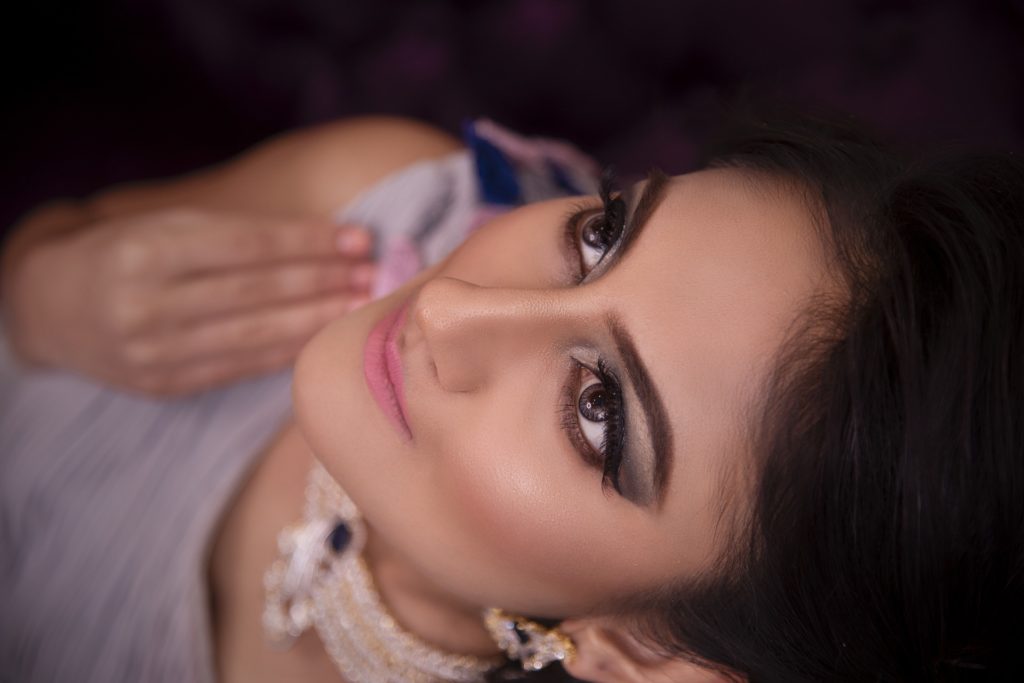Makeup is important for most women, at least those having a flair for fashion. Nowadays it is easy to grab factory-made cosmetics and get the perfect makeup look. The intriguing fact is even the no-makeup look requires numerous makeup products. But have you ever imagined what women used for enhancing their beauty before the introduction of manufactured cosmetics?
How did they adorn their eyes without the factory-produced eyeshadow? How did their lips appear appealing before the introduction of chemical-based lipsticks? How did their cheeks glow with blush without the readymade red blush? And how did they highlight their sharp nose before the manufacturing of highlighters?

Elements of Makeup
You will find all these answers in the pages of ancient Indian makeup history. The story of makeup in India is ravishing as well as spiritual. Earlier when Kings used to rule over India, makeup was not only a medium to enhance beauty but also to worship the deity. Applying makeup was not only confined to women but also included men. Generally, the only makeup in which the men participated was the painting of the forehead with tilak.
On the other hand, women employed numerous elements of makeup. The ancient Indian women knew exactly how to complement their natural features using natural ingredients. The makeup products used during this period were variegated mixtures formed from raw natural products. These natural elements helped to gracefully adorn women.
Following are some significant elements of makeup that helped to compliment the beauty of Indian women-
Bindi
The red circle of virtue, Bindi was painted on the forehead. Bindi was a spiritual makeup element and was worn only by married women. The mixing of turmeric powder and lime juice resulted in a red paste that was elegantly used as the jewel of the forehead.
Kajal
Unlike the variety of options for eye makeup that are available today, in ancient times, Kajal was the only choice. Kajal was the black makeup mixture that helped to elevate the innocence of the eyes. Along with this Kajal was considered as a shield against the evil. Kajal was prepared by covering a muslin cloth with the sandalwood paste and then burning the dried cloth in a castor oil lamp. For best results, the carbon remained was stirred with ghee.
Lip Colour
For enhancing the elegance of lips women used different colouring natural elements. Chewing betel leaves was one of the activities that aimed at providing the effect of lipsticks.
Face Powder
The status system was even more aggressive during this period. Maintaining a paler skin complex was indispensable for the women on higher ranks. Several different mixtures of natural ingredients were used to whiten and brighten the skin. One of the mixtures involved Lebbeck leaves, costus root, cedarwood, sesame seeds, barberry wood, and Pongamia pea plant leaves. These natural mixtures were safe and efficient for the purpose.
Jewellery
In Ancient times makeup was complimented by beautiful jewellery. And the reflection of gold jewellery did the role of highlighters.
The makeup elements used by the different statuses of women were different. Where Queens enjoyed a luxurious life and boundless access to natural makeup products, the commoners only adhered to only the traditional obligatory elements. Makeup differed according to occasion as well. One of the most auspicious and makeup-prone occasions was weddings.
The Looks of Ancient Indian Brides
The looks of ancient Indian brides were magnificent. The blend of simplicity with the dazzling makeup glorified the beauty of the bride. In Ancient India the brides were adorned with heavy jewellery and makeup. And the main attraction of the makeup was the colouring of the forehead. Imagine a girl in elegant red attire wearing gold jewellery and subtle makeup with a beautifully decorated forehead with circles of red and white Kumkum.

Another specialty in the look of ancient Indian brides was the beautifully decorated hands. A paste of henna leaves (Mehendi) was used to paint alluring designs on the bride’s hands. This paste left a charming reddish colour on the bride’s hand working as a temporary tattoo. Mehendi holds spiritual importance as well. A whole ceremony was organized for decorating the bride’s hands. It was believed that the colour of Mehendi portrays the bond between the bride and groom.
Conclusion
It is evident that the lack of factory-manufactured cosmetics did not affect the makeup routine of ancient Indian women. Rather, they used the safest products for the skin. The mixtures of natural elements fulfilled the desire of glorifying as well as protected their skins.
Today also, almost the same elements are used to achieve a simple makeup look. The only difference is that the enriching natural elements are switched with the synthesized chemicals. The ancient methods can be employed today as well and just like those women we can follow a proper routine to nurture our natural beauty with the help of nature.
